Christchurch Case study
The Christchurch earthquake of February 2011
- The earthquake occurred on New Zealand’s South Island 10km to the West of Christchurch, Canterbury. It lasted only 10 seconds.
- The earthquake happened on a conservative plate margin between the Pacific Plate and the Australian Plate.
- The epicentre of the quake was just 2km west of the port town of Lyttelton
- It measured 6.3 on the Richter Magnitude scale.
- Christchurch is New Zealand’s second largest city and suffered extensive damage
- Killed 185 people
- The earthquake was only 5 km deep
- The earthquake struck at 12:51 pm on Tuesday, 22 February, 2011
- 6 months earlier on 4th September 2010 another massive magnitude 7.1 earthquake caused significant damage to Christchurch and the central Canterbury region, but with no direct fatalities.
Tectonic setting & Cause

The earthquake was created along a conservative plate margin where the Pacific Plate slid past the Australian Plate in the opposite direction. Where the plates move like this strain energy builds up as the plates lock in place, it reaches a critical level then is breaks, releasing seismic energy. The earthquake occurred on a fault running off this major plate boundary. It was a strike slip event along the fault, mostly horizontal movement with some vertical movement upwards. The earthquake generated its own significant aftershocks;
- 2 Hours after the main earthquake - Largest aftershock of magnitude 5.9
- The first week post event - 361+ aftershocks (magnitude 3+ foreshocks) in the first week
EFFECTS OF THE FEBRUARY 2011 EARTHQUAKE
Primary effects (caused directly by the earthquake)
- 185 people were killed in the earthquake. Over half of the deaths occurred in the six-storey Canterbury Television (CTV) Building, which collapsed and caught fire in the quake.
- 3,129 people injured
- April 2013, the total estimated cost had ballooned to $40 billion
- Significant liquefaction affected the eastern suburbs, producing around 400,000 tonnes of silt
- Building damage to the central city and eastern suburbs of Christchurch. The damage was made worse by buildings and infrastructure already being weakened by the 4 September 2010 earthquake and its aftershock. Up to 100,000 buildings were damaged and about 10,000 buildings needed to be demolished.
- 3.5 m tsunami waves in Tasman Lake, following quake-triggered glacier calving from Tasman Glacier
- Water pipes, roads, bridges, power lines, cell phone towers and ordinary phone lines were broken or damaged.
- 50% + of Central City buildings severely damaged including the city’s cathedral which lost its spire
Secondary effects (things that happen after the primary effects but often as a result of them)
- Some economists have estimated it will take the New Zealand economy 50 to 100 years to completely recover.
- 80% of the water and sewerage system was severely damaged
- An additional 1,293 people were injured in the aftermath
- Psychological impacts – in a survey post event (2013) 80% of respondents stated their lives had changed significantly since the earthquakes. Almost a third said the earthquakes had caused them financial problems, while 64% said they felt guilty that other Cantabrians were more affected by the earthquakes.
- Outmigration of a fifth of the city population
- The population, which had been growing for decades, declined in the years after the quake
- Damage to roads through liquefaction made it difficult for people and emergency services to move around
- Christchurch could no longer host Rugby World Cup matches so lost the benefits, e.g. tourism and income
- Schools had to join together
- Rescue crews from all over the world came to help. There were crews from Japan, the United States, the United Kingdom, Taiwan, Australia and other countries.
- Aid money poured in – Australia gave $5 million (Aus $) in aid.
- The government declared a state of national emergency, which stayed in force until 30 April 2011
- Domestic help was available - The Farmy Army was made up of 800 farmers who brought their farm machines and muscle to help clean up the city.
- The most vulnerable people were cared for and people were kept safe away from dangerous buildings
- Chemical toilets were provided for 30,000 residents
- The Red Cross and other charities supplied aid workers
- More than 300 Australian police officers flew into Christchurch three days after the earthquake.
- The government provided temporary housing and ensured all damaged housing was kept water tight
- Water and sewerage was restored for all residents by August
- Roads and houses were cleared of silt from liquefaction by August and 80% of roads & 50% of footpaths were repaired
- Many Non-government organisations including Save the Children helped with long term recovery efforts
- Canterbury Earthquake Recovery Authority was created to organise the REBUILD of the region. It had special powers to change planning laws and regulations.
Green Zone land was undamaged and could be built on again. Orange Zone more checks were needed before the land could be built on. White Zone was the area that had not been checked at all yet. Red Zone areas were very unstable: building on it safely would be difficult.
NEXT TOPIC - Why live in tectonic areas?
©2015 Cool Geography
- Copyright Policy
- Privacy & Cookies
- Testimonials
- Feedback & support


Case Study: Christchurch, New Zealand Earthquake
Earthquake case study - christchurch, new zealand.
Two earthquakes hit the city of Christchurch, on New Zealand's south-east coast, in late 2010/early 2011. The second one hit the city centre, killing 185 and destroying much of the CBD.

1st earthquake (4/9/10)
- Magnitude 7.1.
- People were asleep and the streets mostly empty.
- Buildings were weakened, which became an issue in the 2nd earthquake.
- E.g. 'Turtle safe' - an earthquake safety resource aimed at preschool children which encourages them to act like a turtle during an earthquake.

2nd earthquake (22/2/11) facts
- Magnitude 6.3, hit closer to the CBD than the first earthquake.
- Thousands of people were out and about at work and school.
- The city centre was busy.
- 130 deaths caused by the collapsing of the Canterbury TV and Pyne Gould Corporation buildings.
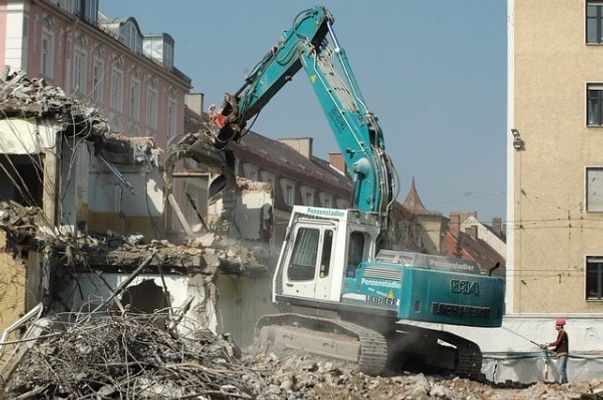
2nd earthquake damage
- The Provincial Council Chambers and the Anglican Christchurch Cathedral were completely destroyed.
- Over half of the buildings in the central business district have been (intentionally) demolished since as they were no longer safe, including the Hotel Grand Chancellor.
- Liquefaction sludge moved upwards through cracks in residential streets.
- Water and sewage from broken pipes flooded the streets.
- Several thousand homes in the 'red zone' were demolished because they could no longer be safely inhabited.
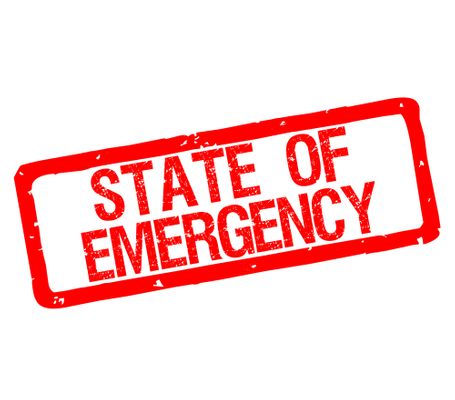
2nd earthquake responses
- State of emergency declared by national government on 23rd February.
- Christchurch's CBD was cordoned off until June 2013 in some locations.
- 75% of power reinstated within 96 hours.
- Local residents and the creative community have been taking over the 'empty spaces' in the CBD with art installations and street art.
1 Geography Skills
1.1 Mapping
1.1.1 Map Making
1.1.2 OS Maps
1.1.3 Grid References
1.1.4 Contour Lines
1.1.5 Symbols, Scale and Distance
1.1.6 Directions on Maps
1.1.7 Describing Routes
1.1.8 Map Projections
1.1.9 Aerial & Satellite Images
1.1.10 Using Maps to Make Decisions
1.2 Geographical Information Systems
1.2.1 Geographical Information Systems
1.2.2 How do Geographical Information Systems Work?
1.2.3 Using Geographical Information Systems
1.2.4 End of Topic Test - Geography Skills
2 Geology of the UK
2.1 The UK's Rocks
2.1.1 The UK's Main Rock Types
2.1.2 The UK's Landscape
2.1.3 Using Rocks
2.1.4 Weathering
2.2 Case Study: The Peak District
2.2.1 The Peak District
2.2.2 Limestone Landforms
2.2.3 Quarrying
3 Geography of the World
3.1 Geography of America & Europe
3.1.1 North America
3.1.2 South America
3.1.3 Europe
3.1.4 The European Union
3.1.5 The Continents
3.1.6 The Oceans
3.1.7 Longitude
3.1.8 Latitude
3.1.9 End of Topic Test - Geography of the World
4 Development
4.1 Development
4.1.1 Classifying Development
4.1.3 Evaluation of GDP
4.1.4 The Human Development Index
4.1.5 Population Structure
4.1.6 Developing Countries
4.1.7 Emerging Countries
4.1.8 Developed Countries
4.1.9 Comparing Development
4.2 Uneven Development
4.2.1 Consequences of Uneven Development
4.2.2 Physical Factors Affecting Development
4.2.3 Historic Factors Affecting Development
4.2.4 Human & Social Factors Affecting Development
4.2.5 Breaking Out of the Poverty Cycle
4.3 Case Study: Democratic Republic of Congo
4.3.1 The DRC: An Overview
4.3.2 Political & Social Factors Affecting Development
4.3.3 Environmental Factors Affecting the DRC
4.3.4 The DRC: Aid
4.3.5 The Pros & Cons of Aid in DRC
4.3.6 Top-Down vs Bottom-Up in DRC
4.3.7 The DRC: Comparison with the UK
4.3.8 The DRC: Against Malaria Foundation
4.4 Case Study: Nigeria
4.4.1 The Importance & Development of Nigeria
4.4.2 Nigeria's Relationships with the Rest of the World
4.4.3 Urban Growth in Lagos
4.4.4 Population Growth in Lagos
4.4.5 Factors influencing Nigeria's Growth
4.4.6 Nigeria: Comparison with the UK
5 Weather & Climate
5.1 Weather
5.1.1 Weather & Climate
5.1.2 Components of Weather
5.1.3 Temperature
5.1.4 Sunshine, Humidity & Air Pressure
5.1.5 Cloud Cover
5.1.6 Precipitation
5.1.7 Convectional Precipitation
5.1.8 Frontal Precipitation
5.1.9 Relief or Orographic Precipitation
5.1.10 Wind
5.1.11 Extreme Wind
5.1.12 Recording the Weather
5.1.13 Extreme Weather
5.2 Climate
5.2.1 Climate of the British Isles
5.2.2 Comparing Weather & Climate London
5.2.3 Climate of the Tropical Rainforest
5.2.4 End of Topic Test - Weather & Climate
5.3 Tropical Storms
5.3.1 Formation of Tropical Storms
5.3.2 Features of Tropical Storms
5.3.3 The Structure of Tropical Storms
5.3.4 Tropical Storms Case Study: Katrina Effects
5.3.5 Tropical Storms Case Study: Katrina Responses
6 The World of Work
6.1 Tourism
6.1.1 Landscapes
6.1.2 The Growth of Tourism
6.1.3 Benefits of Tourism
6.1.4 Economic Costs of Tourism
6.1.5 Social, Cultural & Environmental Costs of Tourism
6.1.6 Tourism Case Study: Blackpool
6.1.7 Ecotourism
6.1.8 Tourism Case Study: Kenya
7 Natural Resources
7.1.1 What are Rocks?
7.1.2 Types of Rock
7.1.4 The Rock Cycle - Weathering
7.1.5 The Rock Cycle - Erosion
7.1.6 What is Soil?
7.1.7 Soil Profiles
7.1.8 Water
7.1.9 Global Water Demand
7.2 Fossil Fuels
7.2.1 Introduction to Fossil Fuels
7.2.2 Fossil Fuels
7.2.3 The Global Energy Supply
7.2.5 What is Peak Oil?
7.2.6 End of Topic Test - Natural Resources
8.1 River Processes & Landforms
8.1.1 Overview of Rivers
8.1.2 The Bradshaw Model
8.1.3 Erosion
8.1.4 Sediment Transport
8.1.5 River Deposition
8.1.6 River Profiles: Long Profiles
8.1.7 River Profiles: Cross Profiles
8.1.8 Waterfalls & Gorges
8.1.9 Interlocking Spurs
8.1.10 Meanders
8.1.11 Floodplains
8.1.12 Levees
8.1.13 Case Study: River Tees
8.2 Rivers & Flooding
8.2.1 Flood Risk Factors
8.2.2 Flood Management: Hard Engineering
8.2.3 Flood Management: Soft Engineering
8.2.4 Flooding Case Study: Boscastle
8.2.5 Flooding Case Study: Consequences of Boscastle
8.2.6 Flooding Case Study: Responses to Boscastle
8.2.7 Flooding Case Study: Bangladesh
8.2.8 End of Topic Test - Rivers
8.2.9 Rivers Case Study: The Nile
8.2.10 Rivers Case Study: The Mississippi
9.1 Formation of Coastal Landforms
9.1.1 Weathering
9.1.2 Erosion
9.1.3 Headlands & Bays
9.1.4 Caves, Arches & Stacks
9.1.5 Wave-Cut Platforms & Cliffs
9.1.6 Waves
9.1.7 Longshore Drift
9.1.8 Coastal Deposition
9.1.9 Spits, Bars & Sand Dunes
9.2 Coast Management
9.2.1 Management Strategies for Coastal Erosion
9.2.2 Case Study: The Holderness Coast
9.2.3 Case Study: Lyme Regis
9.2.4 End of Topic Test - Coasts
10 Glaciers
10.1 Overview of Glaciers & How They Work
10.1.1 Distribution of Glaciers
10.1.2 Types of Glaciers
10.1.3 The Last Ice Age
10.1.4 Formation & Movement of Glaciers
10.1.5 Shaping of Landscapes by Glaciers
10.1.6 Glacial Landforms Created by Erosion
10.1.7 Glacial Till & Outwash Plain
10.1.8 Moraines
10.1.9 Drumlins & Erratics
10.1.10 End of Topic Tests - Glaciers
10.1.11 Tourism in Glacial Landscapes
10.1.12 Strategies for Coping with Tourists
10.1.13 Case Study - Lake District: Tourism
10.1.14 Case Study - Lake District: Management
11 Tectonics
11.1 Continental Drift & Plate Tectonics
11.1.1 The Theory of Plate Tectonics
11.1.2 The Structure of the Earth
11.1.3 Tectonic Plates
11.1.4 Plate Margins
11.2 Volcanoes
11.2.1 Volcanoes & Their Products
11.2.2 The Development of Volcanoes
11.2.3 Living Near Volcanoes
11.3 Earthquakes
11.3.1 Overview of Earthquakes
11.3.2 Consequences of Earthquakes
11.3.3 Case Study: Christchurch, New Zealand Earthquake
11.4 Tsunamis
11.4.1 Formation of Tsunamis
11.4.2 Case Study: Japan 2010 Tsunami
11.5 Managing the Risk of Volcanoes & Earthquakes
11.5.1 Coping With Earthquakes & Volcanoes
11.5.2 End of Topic Test - Tectonics
12 Climate Change
12.1 The Causes & Consequences of Climate Change
12.1.1 Evidence for Climate Change
12.1.2 Natural Causes of Climate Change
12.1.3 Human Causes of Climate Change
12.1.4 The Greenhouse Effect
12.1.5 Effects of Climate Change on the Environment
12.1.6 Effects of Climate Change on People
12.1.7 Climate Change Predictions
12.1.8 Uncertainty About Future Climate Change
12.1.9 Mitigating Against Climate Change
12.1.10 Adapting to Climate Change
12.1.11 Case Study: Bangladesh
13 Global Population & Inequality
13.1 Global Populations
13.1.1 World Population
13.1.2 Population Structure
13.1.3 Ageing Populations
13.1.4 Youthful Populations
13.1.5 Population Control
13.1.6 Mexico to USA Migration
13.1.7 End of Topic Test - Development & Population
14 Urbanisation
14.1 Urbanisation
14.1.1 Rural Characterisitcs
14.1.2 Urban Characteristics
14.1.3 Urbanisation Growth
14.1.4 The Land Use Model
14.1.5 Rural-Urban Pull Factors
14.1.6 Rural-Urban Push Factors
14.1.7 The Impacts of Migration
14.1.8 Challenges of Urban Areas in Developed Countries
14.1.9 Challenges of Urban Areas in Developing Countries
14.1.10 Urban Sustainability
14.1.11 Case Study: China's Urbanisation
14.1.12 Major UK Cities
14.1.13 Urbanisation in the UK
14.1.14 End of Topic Test- Urbanisation
14.1.15 End of Topic Test - Urban Issues
15 Ecosystems
15.1 The Major Biomes
15.1.1 Distribution of Major Biomes
15.1.2 What Affects the Distribution of Biomes?
15.1.3 Biome Features: Tropical Forests
15.1.4 Biome Features: Temperate Forests
15.1.5 Biome Features: Tundra
15.1.6 Biome Features: Deserts
15.1.7 Biome Features: Tropical Grasslands
15.1.8 Biome Features: Temperate Grasslands
15.2 Case Study: The Amazon Rainforest
15.2.1 Interdependence of Rainforest Ecosystems
15.2.2 Nutrient Cycling in Tropical Rainforests
15.2.3 Deforestation in the Amazon
15.2.4 Impacts of Deforestation in the Amazon
15.2.5 Protecting the Amazon
15.2.6 Adaptations of Plants to Rainforests
15.2.7 Adaptations of Animals to Rainforests
16 Life in an Emerging Country
16.1 Case Studies
16.1.1 Mumbai: Opportunities
16.1.2 Mumbai: Challenges
17 Analysis of Africa
17.1 Africa
17.1.1 Desert Biomes in Africa
17.1.2 The Semi-Desert Biome
17.1.3 The Savanna Biome
17.1.4 Overview of Tropical Rainforests
17.1.5 Colonisation History
17.1.6 Population Distribution in Africa
17.1.7 Economic Resources in Africa
17.1.8 Urbanisation in Africa
17.1.9 Africa's Location
17.1.10 Physical Geography of Africa
17.1.11 Desertification in Africa
17.1.12 Reducing the Risk of Desertification
17.1.13 Case Study: The Sahara Desert - Opportunities
17.1.14 Case Study: The Sahara Desert - Development
18 Analysis of India
18.1 India - Physical Geography
18.1.1 Geographical Location of India
18.1.2 Physical Geography of India
18.1.3 India's Climate
18.1.4 Natural Disasters in India
18.1.5 Case Study: The Thar Desert
18.1.6 Case Study: The Thar Desert - Challenges
18.2 India - Human Geography
18.2.1 Population Distribution in India
18.2.2 Urabinsation in India
18.2.3 The History of India
18.2.4 Economic Resources in India
19 Analysis of the Middle East
19.1 The Middle East
19.1.1 Physical Geography of the Middle East
19.1.2 Human Geography of the Middle East
19.1.3 Climate Zones in the Middle East
19.1.4 Climate Comparison with the UK
19.1.5 Oil & Natural Gas in the Middle East
19.1.6 Water in the Middle East
19.1.7 Population of the Middle East
19.1.8 Development Case Studies: The UAE
19.1.9 Development Case Studies: Yemen
19.1.10 Supporting Development in Yemen
19.1.11 Connection to the UK
19.1.12 Importance of Oil
19.1.13 Oil & Tourism in the UAE
20 Analysis of Bangladesh
20.1 Bangladesh Physical Geography
20.1.1 Location of Bangladesh
20.1.2 Climate of Bangladesh
20.1.3 Rivers in Bangladesh
20.1.4 Flooding in Bangladesh
20.2 Bangladesh Human Geography
20.2.1 Population Structure in Bangladesh
20.2.2 Urbanisation in Bangladesh
20.2.3 Bangladesh's Economy
20.2.4 Energy & Sustainability in Bangladesh
21 Analysis of Russia
21.1 Russia's Physical Geography
21.1.1 Russia's Climate
21.1.2 Russia's Landscape
21.2 Russia's Human Geography
21.2.1 Population of Russia
21.2.2 Russia's Economy
21.2.3 Energy & Sustainability in Russia
Jump to other topics

Unlock your full potential with GoStudent tutoring
Affordable 1:1 tutoring from the comfort of your home
Tutors are matched to your specific learning needs
30+ school subjects covered
Consequences of Earthquakes
Formation of Tsunamis
Christchurch Bay
Cliff collapse.
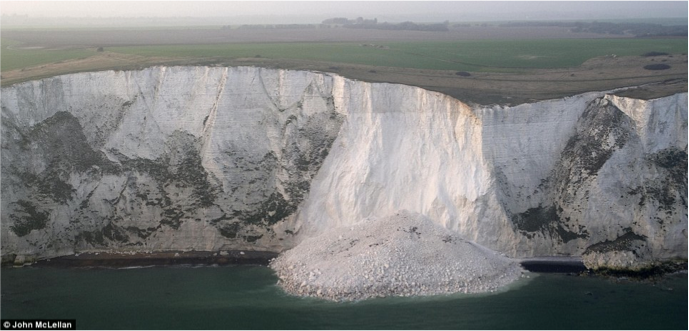
The cliffs in Christchurch Bay which is on the south coast of England. The cliffs here are rapidly eroding at a rate of 1-2m per year.
The cliffs are collapsing and retreating rapidly because:
Marine processes : the bases of the cliffs are being eroded by hydraulic action and abrasion.
Sub-aerial processes : weathering is weakening the rock and then mass movement (slumping and rock fall) is leading to cliff collapse and further erosion.
Geology : in Christchurch Bay permeable sand lies on top of impermeable clay. During wet weather heavy rain saturates the permeable sand, making it much heavier and making the top of the cliff unstable.
Fetch : south-west winds, which have blown 3000 miles across the Atlantic Ocean create strong destructive waves which have lots of energy to erode.
Human activity : it’s a tourist honeypot and there has been extensive building along the cliff top. The extra weight weakens the top of the cliff making it more unstable.
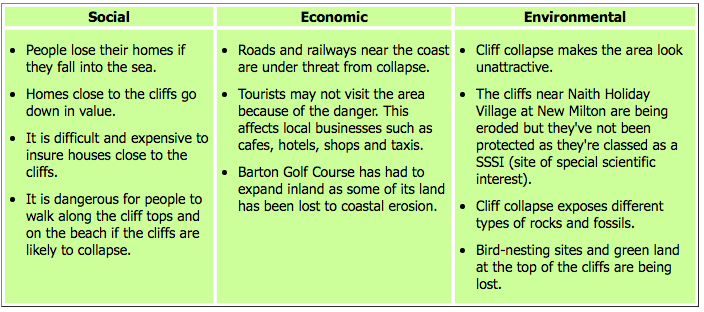
- International
- Schools directory
- Resources Jobs Schools directory News Search

AQA GCSE Geography- New Zealand, Christchurch Case Study
Subject: Geography
Age range: 14-16
Resource type: Assessment and revision
Last updated
19 September 2023
- Share through email
- Share through twitter
- Share through linkedin
- Share through facebook
- Share through pinterest

This resource is a revision poster consisting of the facts that you need to know for the AQA GCSE Geography Case Study on New Zealand, Christchurch (Physical Geography).
Tes paid licence How can I reuse this?
Your rating is required to reflect your happiness.
It's good to leave some feedback.
Something went wrong, please try again later.
This resource hasn't been reviewed yet
To ensure quality for our reviews, only customers who have purchased this resource can review it
Report this resource to let us know if it violates our terms and conditions. Our customer service team will review your report and will be in touch.
Not quite what you were looking for? Search by keyword to find the right resource:
- 0 Shopping Cart

New Zealand Earthquake 2016
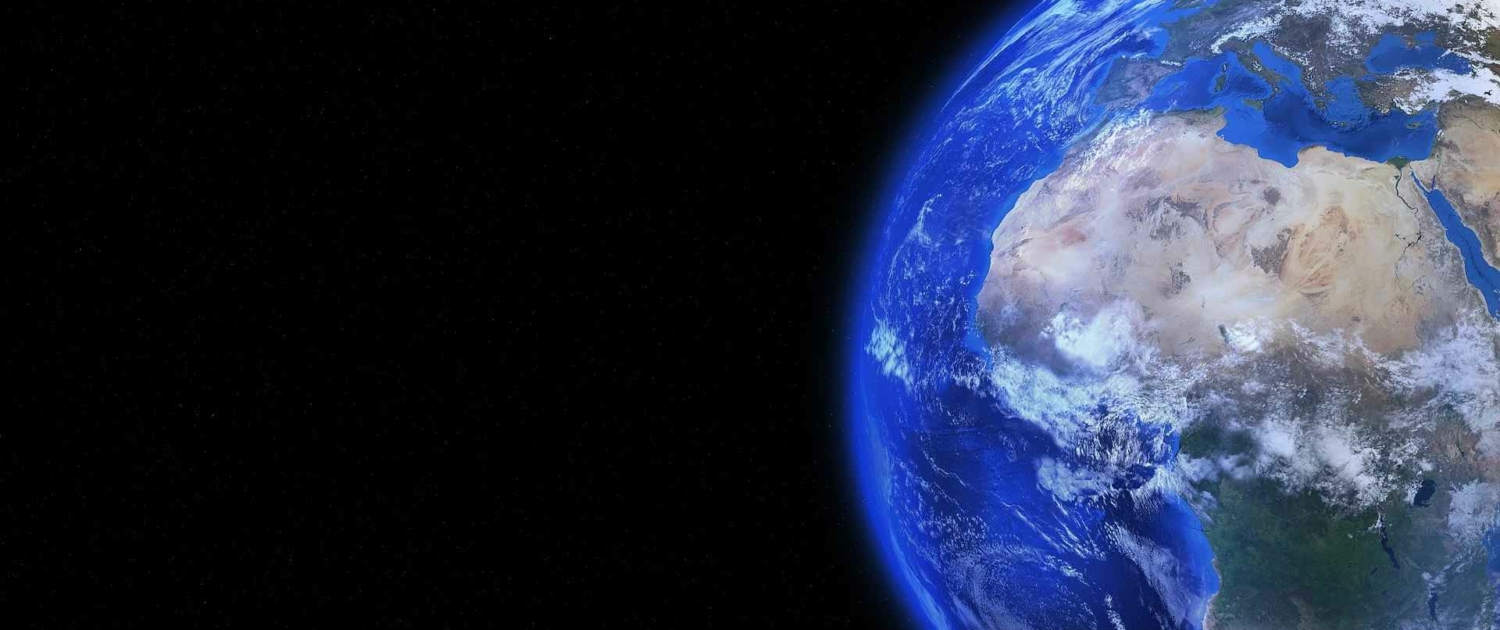
A powerful magnitude-7.8 earthquake struck New Zealand’s South Island, killing at least two people, on November 14th 2016. The earthquake occurred at 00.02 am.
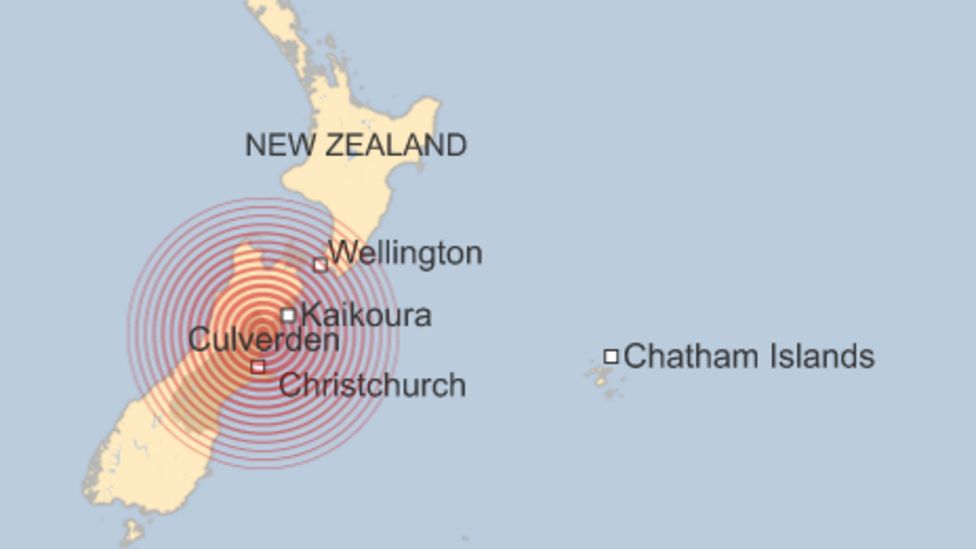
2016 New Zealand Earthquake Map – Source BBC News
It was felt as far afield as the capital Wellington on the North Island, 120 miles (200km) away.
A tsunami arrived about two hours later. People along the eastern coast were warned to head inland or to higher ground.

Primary Effects of the 2016 New Zealand Earthquake
- Two people died.
- Fifty people were injured.
- Sixty people needed emergency housing.
- Over 190km of roads and 200km of railway lines were destroyed
- Twenty thousand buildings were damaged or destroyed.
- Water, sewerage & power supplies were cut off.
- Total damage is estimated at US $8.5 billion.
Secondary Effects of the 2016 New Zealand Earthquake
- One hundred thousand landslides blocked roads and railways.
- A landslide blocked the Clarence River, causing flooding. Ten farms were evacuated.
- The earthquake triggered a tsunami of 5m, leaving debris up to250 metres inland.
Immediate Responses to the 2016 New Zealand Earthquake
- A tsunami warning was issued, and residents were told to get to higher ground.
- Hundreds were housed in emergency shelters.
- Two hundred vulnerable people were evacuated by helicopter.
- Power was restored within hours. International warships were sent to Kaikoura with supplies such as food, medicine and portable toilets.
- Temporary water supplies set up.
- Other countries sent food and medicine.
Long-term Responses to the 2016 New Zealand Earthquake
- $5.3 million from District Council for repairs and rebuilding.
- Road and rail routes reopened within two years.
- A relief fund was set up to provide basic supplies.
- By March 2017, a permanent water main had been laid in Kaikoura. the new pipe was designed to move with any future earthquakes so it won’t break

Premium Resources
Please support internet geography.
If you've found the resources on this page useful please consider making a secure donation via PayPal to support the development of the site. The site is self-funded and your support is really appreciated.
Related Topics
Use the images below to explore related GeoTopics.
Topic Home
Next topic page, share this:.
- Click to share on Twitter (Opens in new window)
- Click to share on Facebook (Opens in new window)
- Click to share on Pinterest (Opens in new window)
- Click to email a link to a friend (Opens in new window)
- Click to share on WhatsApp (Opens in new window)
- Click to print (Opens in new window)
If you've found the resources on this site useful please consider making a secure donation via PayPal to support the development of the site. The site is self-funded and your support is really appreciated.
Search Internet Geography
Top posts and pages.
Latest Blog Entries
Pin It on Pinterest
- Click to share
- Print Friendly

IMAGES
VIDEO
COMMENTS
Christchurch Earthquake Case Study - Find out the cause, effects and responses to the Christchurch Earthquake, an earthquake in an MIC. X; Facebook; Youtube; 0 Shopping Cart +Plus. ... AQA GCSE Geography Pre-release Resources 2024 24 March 2024 - 10:27 pm. GCSE Geography Mind Maps 14 March 2024 ...
Learn and revise about earthquakes and tsunami with BBC Bitesize GCSE Geography (WJEC). ... Case study: Christchurch 2011 (HIC) Case study: Nepal 2015 (LMIC) Tsunamis;
Christchurch is New Zealand's second largest city and suffered extensive damage. Killed 185 people. The earthquake was only 5 km deep. The earthquake struck at 12:51 pm on Tuesday, 22 February, 2011. 6 months earlier on 4th September 2010 another massive magnitude 7.1 earthquake caused significant damage to Christchurch and the central ...
Local residents and the creative community have been taking over the 'empty spaces' in the CBD with art installations and street art. Two earthquakes hit the city of Christchurch, on New Zealand's south-east coast, in late 2010/early 2011. The second one hit the city centre, killing 185 and destroying much of the CBD.
This is a bundle of 16 case studies/examples from the AQA 9-1 GCSE specification. This is a perfect set of resources to give to students to support them in preparation for this GCSE. Each case study/example is condensed to one A4 page, but contains the content that is required aligned with the specification. Each one of these is for sale at £2 ...
Video outlining the major primary vs secondary impacts/effects and short vs long term responses to a tectonic hazard in a rich part of the world. The video e...
Christchurch Bay is an area located on England's south coast near Bournemouth. The coastal landscape surrounding Christchurch Bay has suffered landslides and cliff collapses in recent history due to extensive erosion and instability on the coastline. There are a lot of residential areas and developments around the bay, such as in Highcliffe ...
Everything you need to know about Christchurch Bay for the GCSE Geography B Edexcel exam, totally free, with assessment questions, text & videos. ... GCSE Geography B Edexcel View topics (83) Topics. An Urbanising World Urbanisation; ... Using a case study, discuss the effects of cliff collapse on people's lives and the environment. ...
An AQA specification topic for KS4 in GCSE geography about Natural, Tectonic and Weather Hazards around the world and the effects they have on both LICs and HICs. This bundle also covers the climate change topic as well. ... Finally students will learn about the Christchurch 2011 (HIC) case study and the Haiti 2010 (LIC) as two areas of ...
GEOGRAPHY MYP/GCSE/DP
Study with Quizlet and memorize flashcards containing terms like When did Christchurch earthquake happen, Where is Christchurch, Christchurch earthquake (Richter scale ) and more. ... GCSE Geography: Case study (Christchurch) Flashcards. Learn. Test. Match. When did Christchurch earthquake happen.
The earthquake occurred. on New Zealand's South Island 10km to the West of Christchurch, Canterbury. 10. seconds - duration of the earthquake. 6.3. Size of the earthquake on the Richter scale. 6 months earlier. on 4th September 2010 another massive magnitude 7.1 earthquake caused significant damage to Christchurch and the central Canterbury ...
Terms in this set (12) Where. Christchurch Bay, Bournemouth. How quickly are the cliffs getting eroded? 1-2 metres per year. Why is it getting eroded? Open coastline exposed to 3000 mile fetch which make destructive waves. Social Impact 1. lost homes.
Learn about and revise earthquakes and their causes and effects with GCSE Bitesize Geography (AQA). ... Case study - Haiti Earthquake, 2021; Case study - Namie Earthquake, 2022;
AQA GCSE Geography- New Zealand, Christchurch Case Study. Subject: Geography. Age range: 14-16. Resource type: Assessment and revision. File previews. pub, 104.5 KB. This resource is a revision poster consisting of the facts that you need to know for the AQA GCSE Geography Case Study on New Zealand, Christchurch (Physical Geography).
The average semi detached house price in Anfield is£101,000 and in Woolton it is £230,000. Anfield and Toxteth are among the most deprived areas in England. achieve lower exam results. The proportion of students achieving 5 A*-C GCSEs in Woolton is 75% and in Anfield is only 54%. Economic - Housing Inequalities.
Learn and revise about earthquakes and tsunami with BBC Bitesize GCSE Geography (WJEC). ... Case study: Christchurch 2011 (HIC) Case study: Nepal 2015 (LMIC) Tsunamis;
Geography Case Studies - A wide selection of geography case studies to support you with GCSE Geography revision, homework and research. X; Facebook; Youtube; 0 Shopping Cart +Plus. Log In; Subscription resources; Search Plus Resources; ... Christchurch Earthquake Case Study; Nepal Earthquake 2015;
Study with Quizlet and memorize flashcards containing terms like What was the magnitude of the 2011 Christchurch earthquake and what type of plate margin caused it?, How much international aid was given in response to the Christchurch earthquake?, Name two primary responses to the Christchurch earthquake. and more.
Learn about and revise earthquakes and their causes and effects with GCSE Bitesize Geography (AQA). ... Case study - Haiti Earthquake, 2021; Case study - Namie Earthquake, 2022;
Christchurch Earthquake Case Study; Nepal Earthquake 2015; Amatrice Earthquake Case Study; ... AQA GCSE Geography Pre-release Resources 2024 24 March 2024 - 10:27 pm. GCSE Geography Mind Maps 14 March 2024 - 2:02 pm. Statistical Techniques in Geography Poster 26 February 2024 - 2:11 pm.
GCSE Geography, Case Study: Comparing Earthquakes - New Zealand and Haiti. Port-au-Prince, Haiti. Click the card to flip 👆. Haiti is an LIC in the Caribbean. On the 12th Janurary 2010, a 7.0 magnitude earthquake struck the LIC with its epicentre 25 km from the capital Port-au-Prince with a focus 13 km underground. Click the card to flip 👆.
Christchurch Earthquake Case Study; Nepal Earthquake 2015; Amatrice Earthquake Case Study; ... AQA GCSE Geography Pre-release Resources 2024 24 March 2024 - 10:27 pm. GCSE Geography Mind Maps 14 March 2024 - 2:02 pm. Statistical Techniques in Geography Poster 26 February 2024 - 2:11 pm.